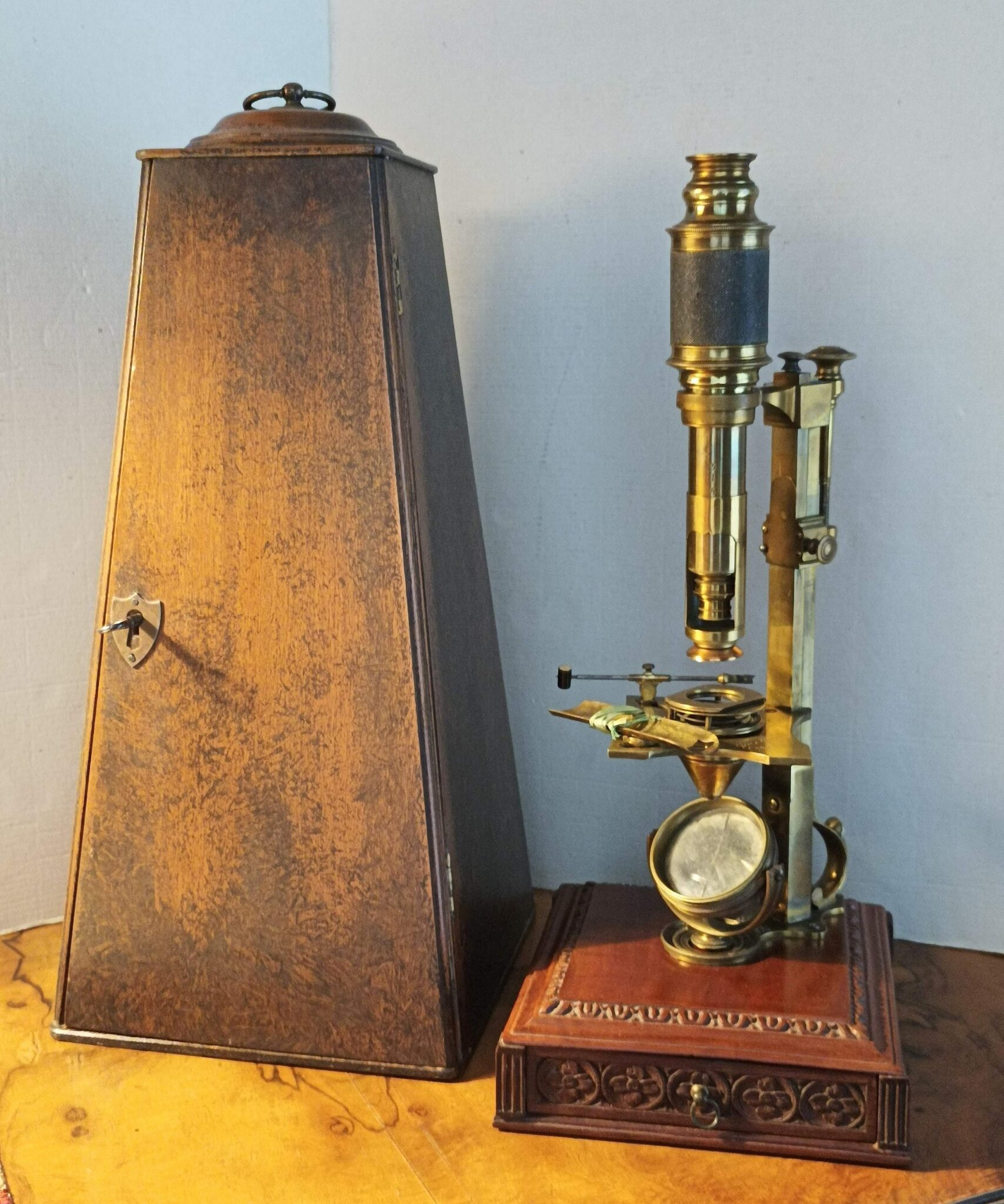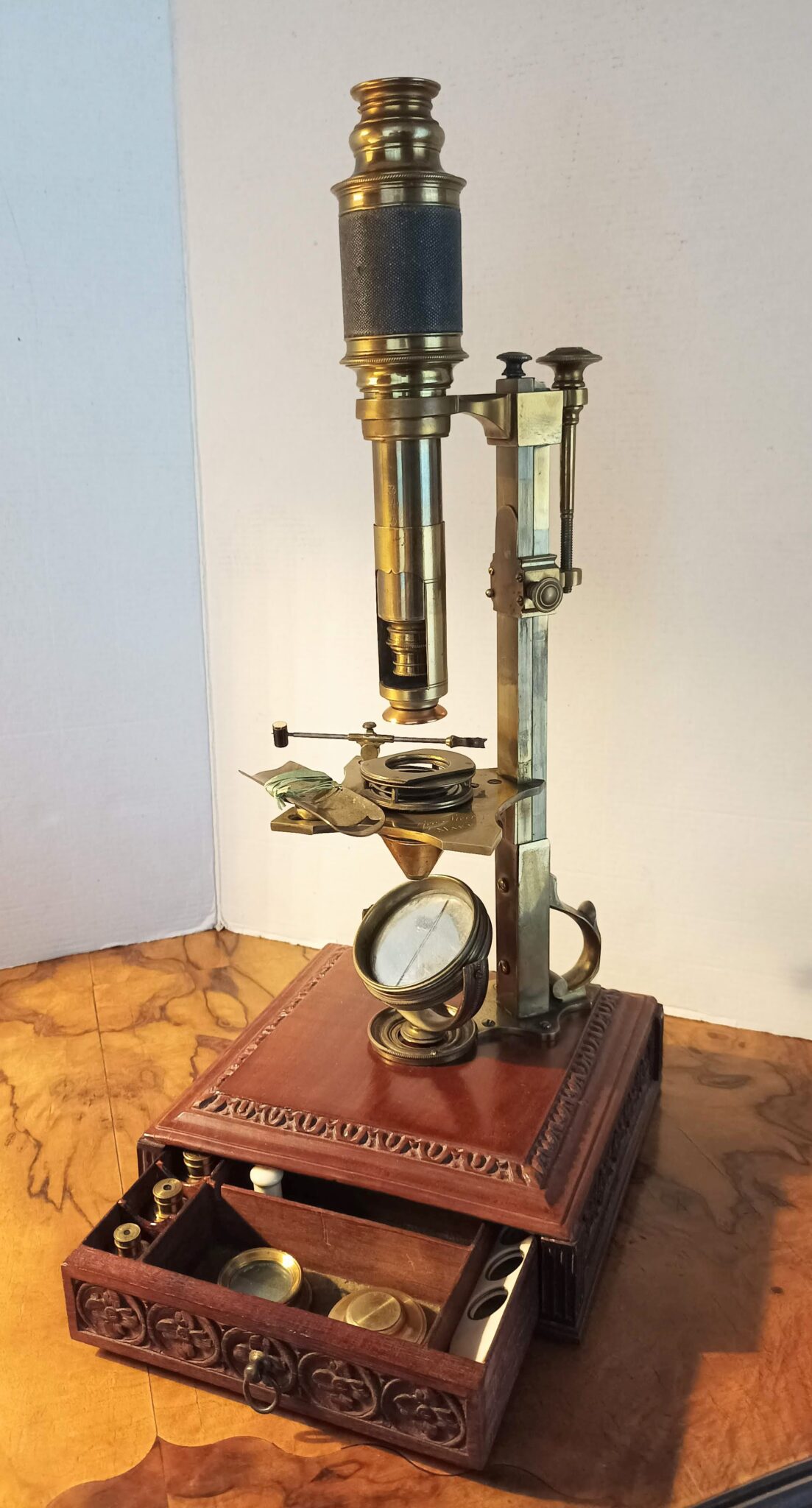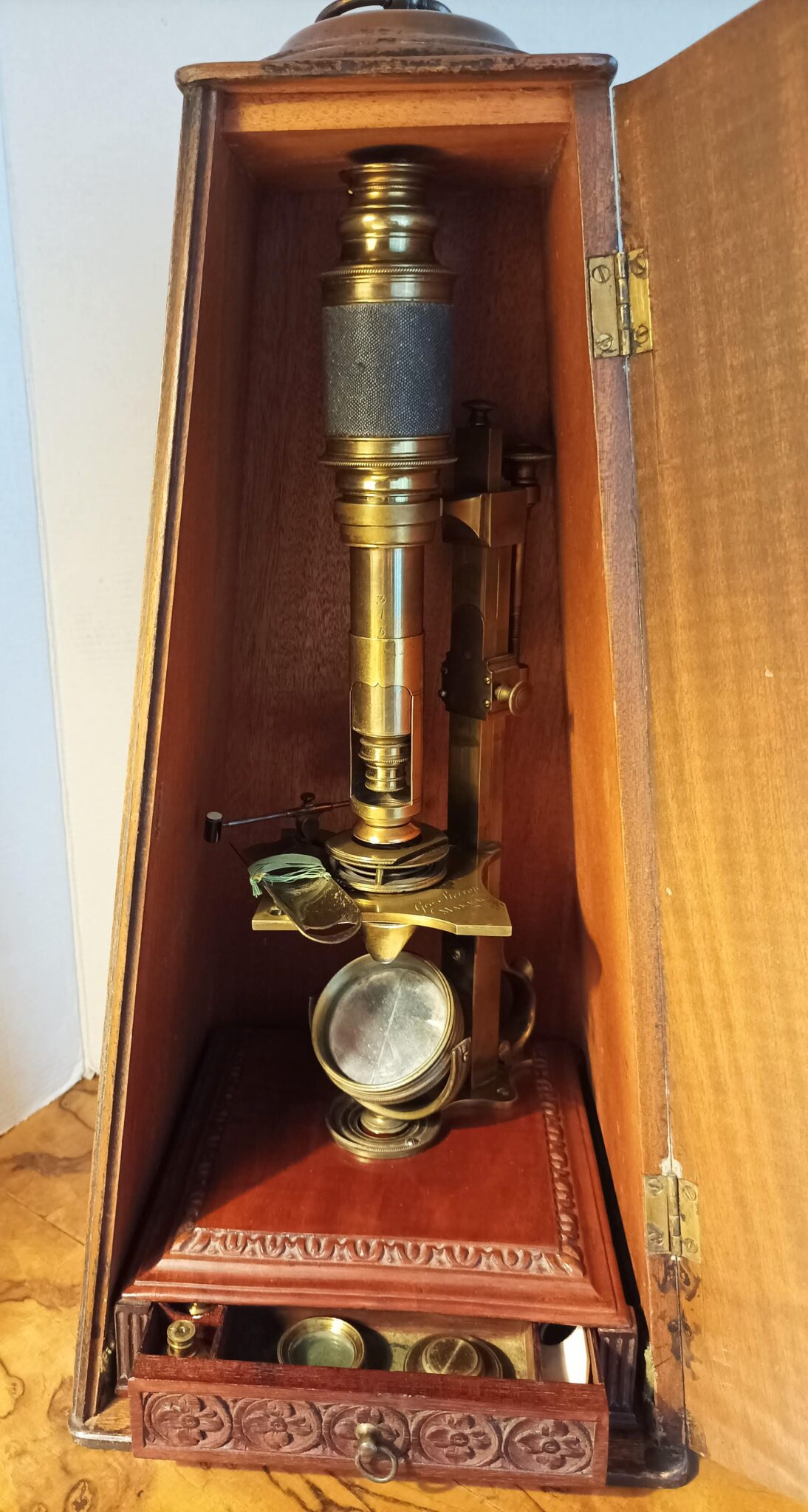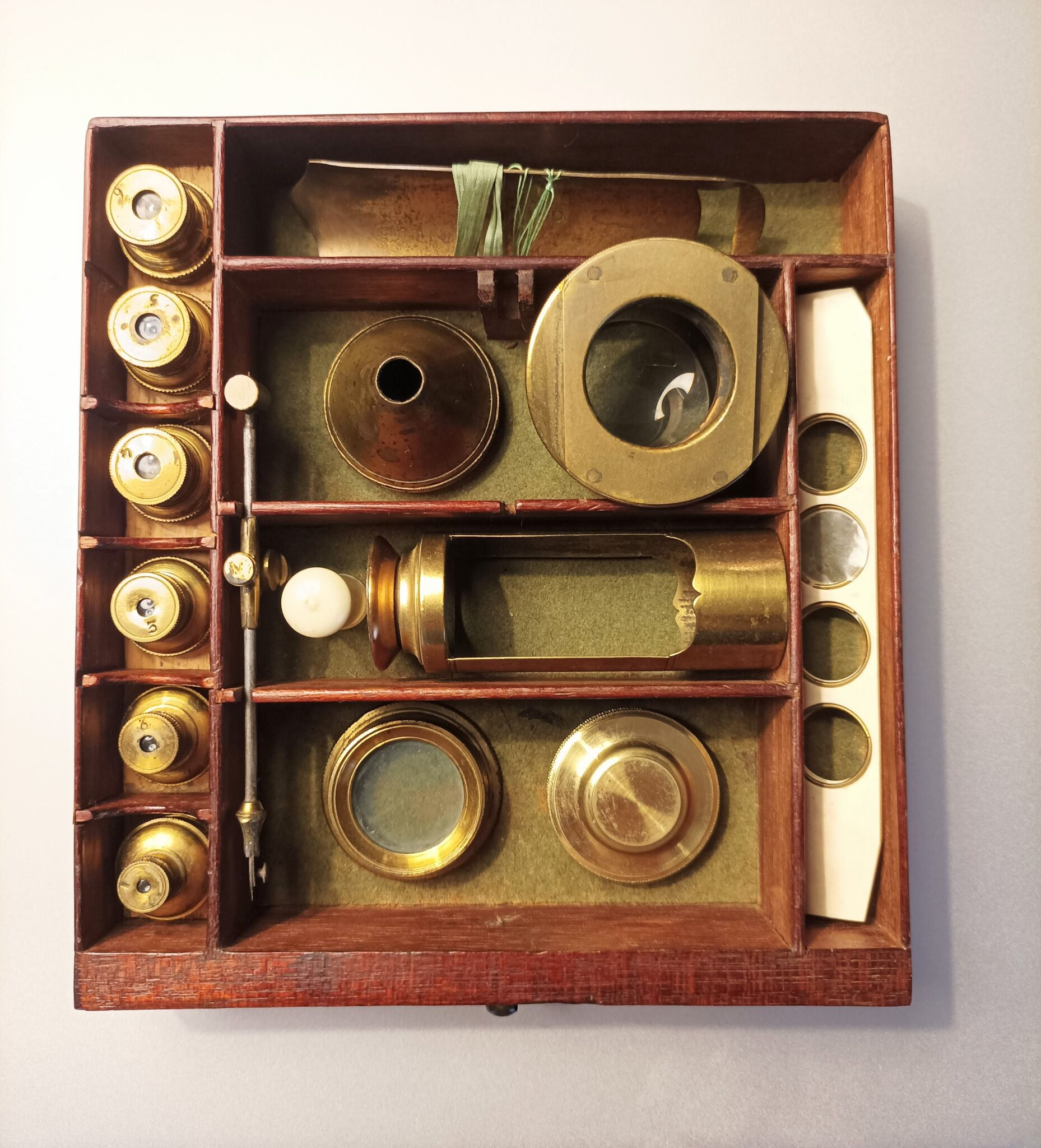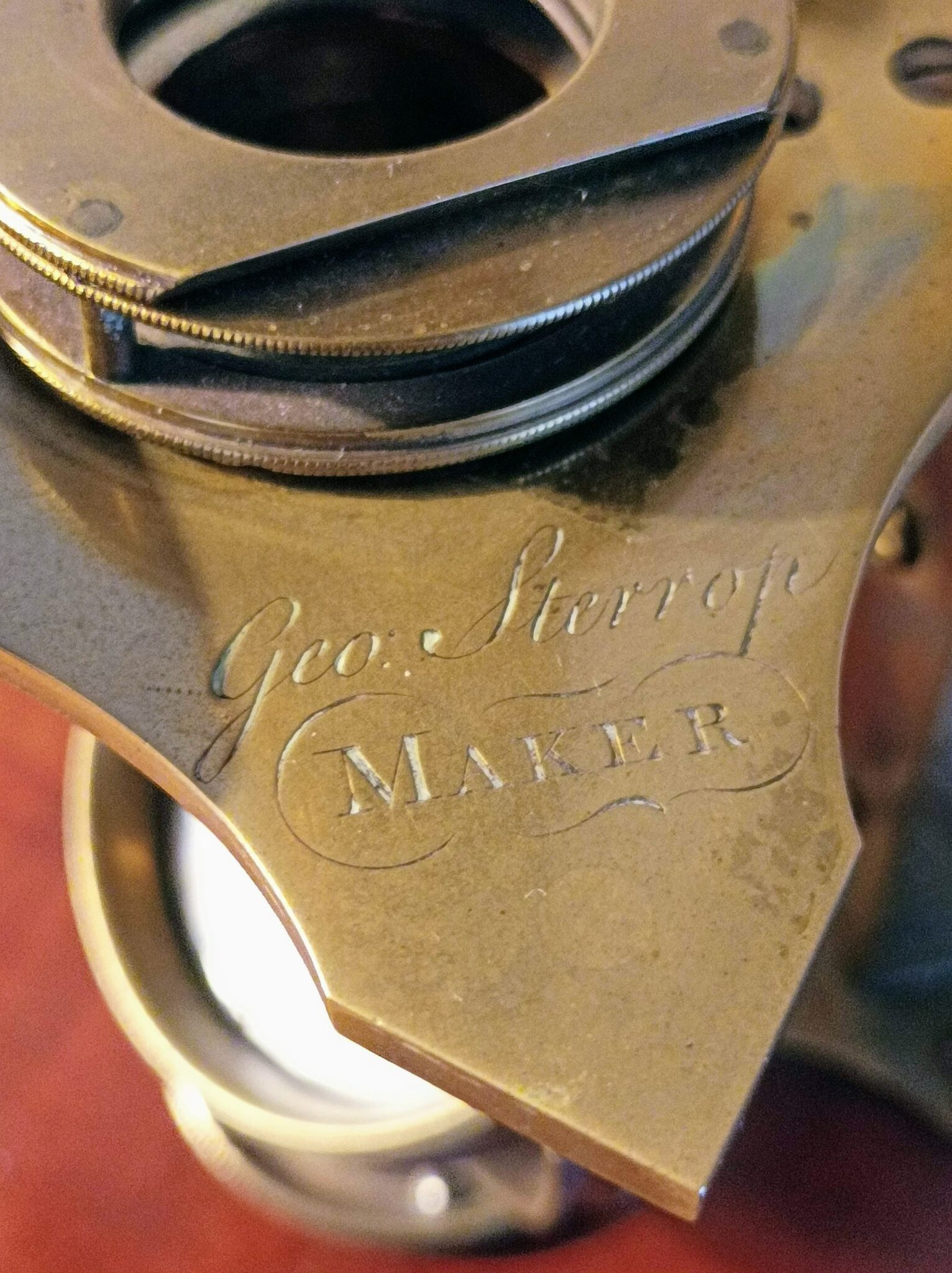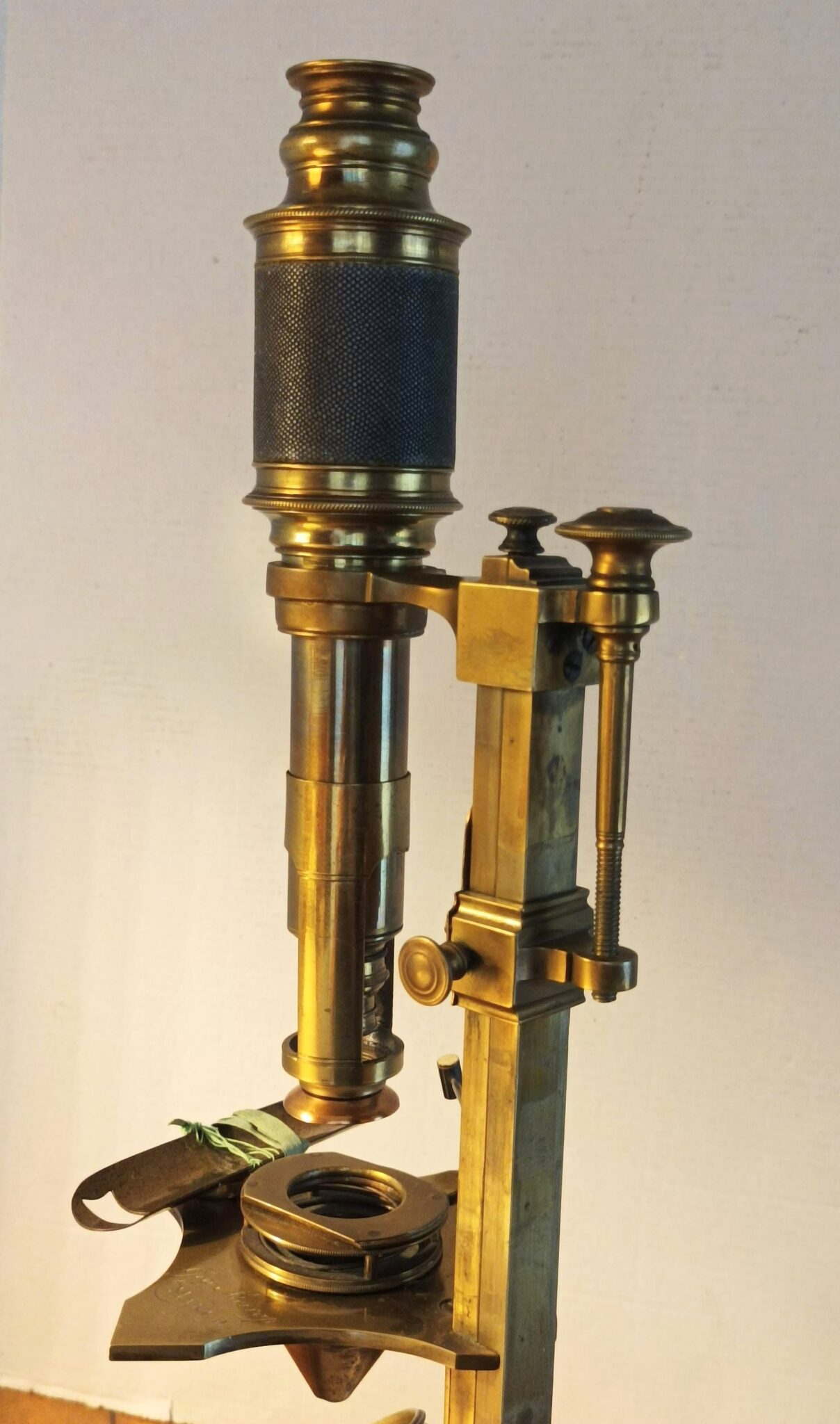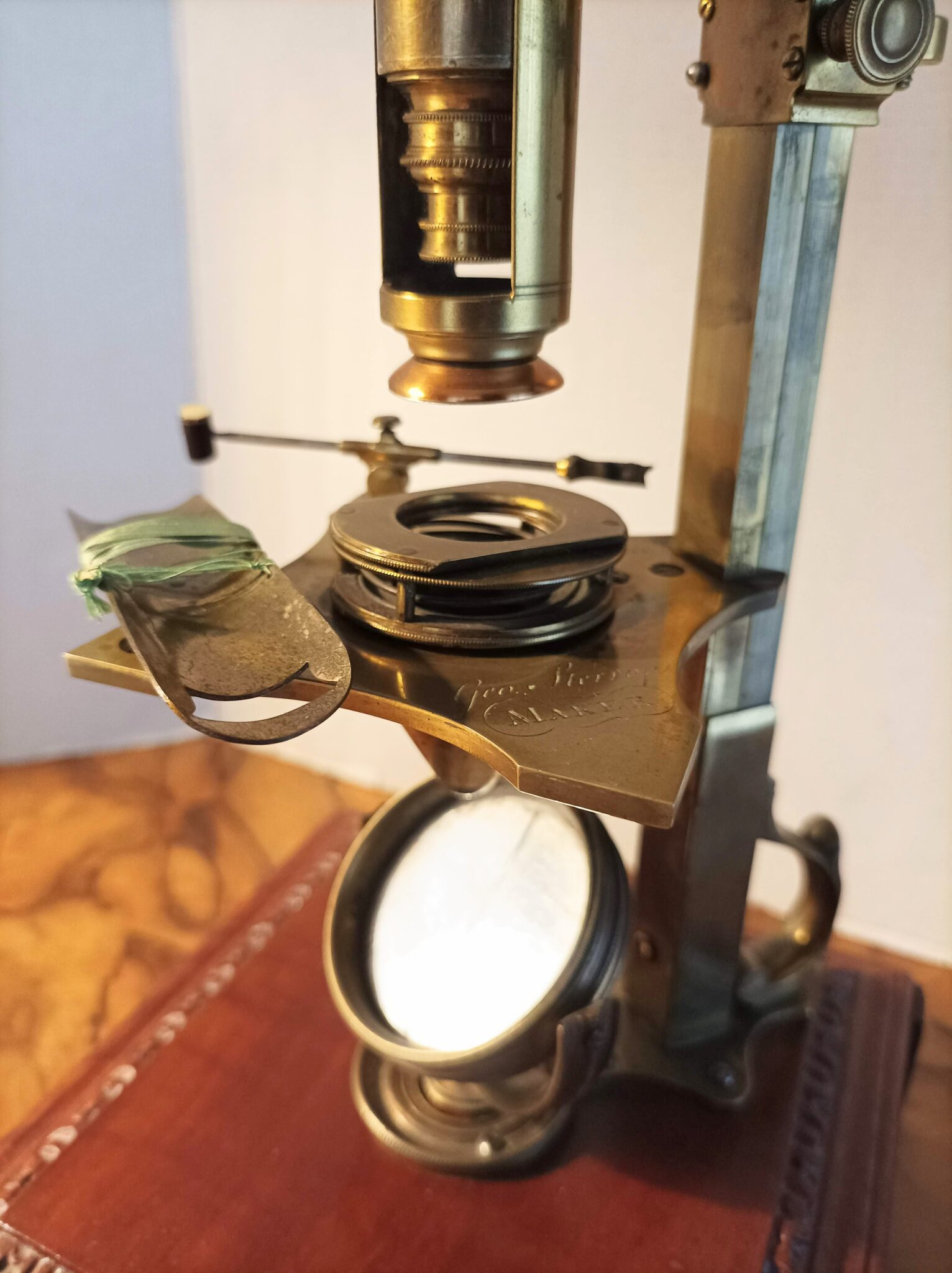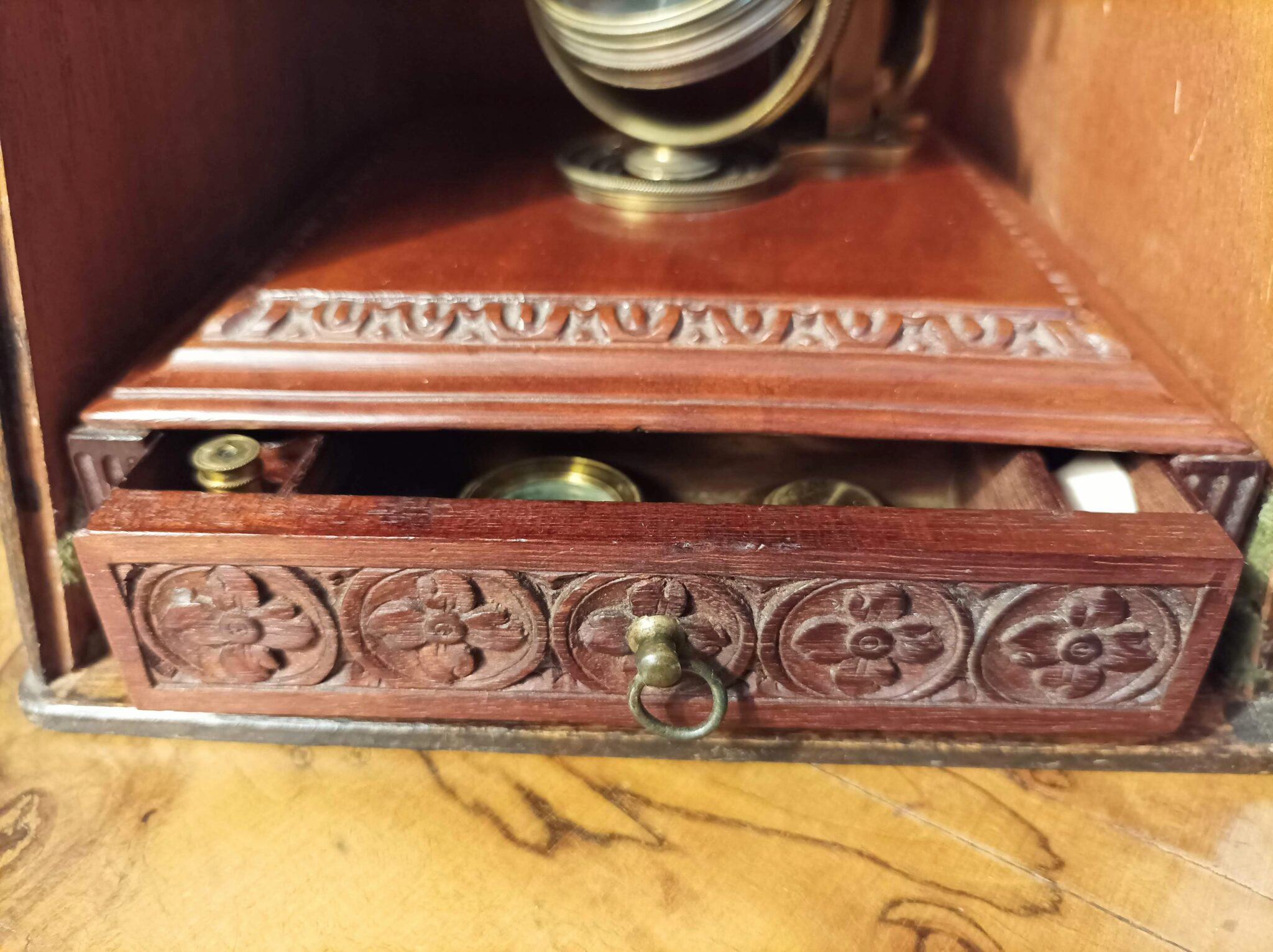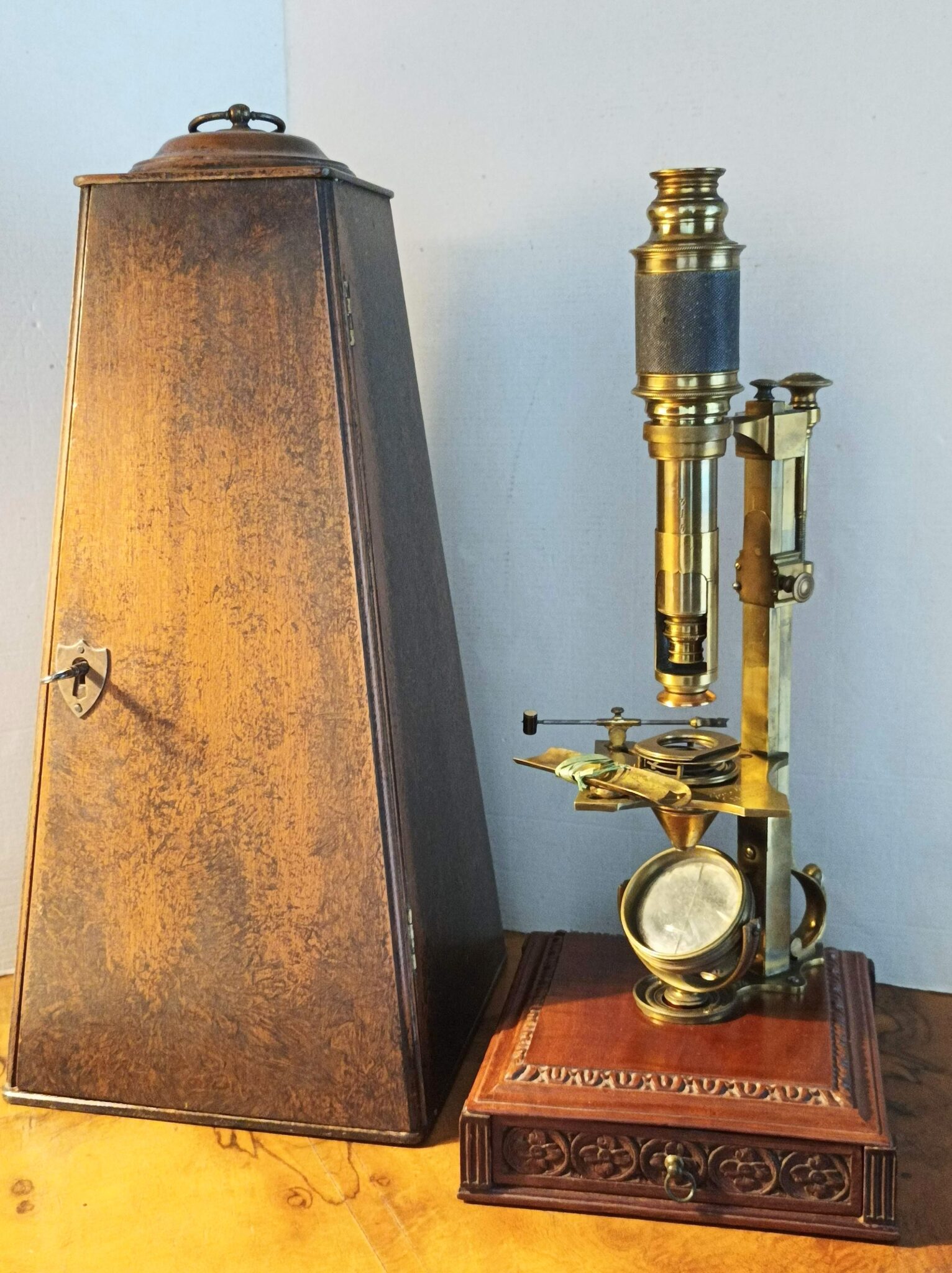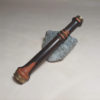Description
An exquisite Cuff-type microscope by Sterrop, 1747-1756 + case
Dimension: 38cm (15”) fully extended, case 41cm (16”), base 16.5cm x16.5 (6 ½”)
Condition: very good, mirror with central fissure
The microscope is signed “ Geo. Sterrop Maker” on the stage. Body tube is covered with black fishskin. It stands on an elaborate wooden base with carved decoration on each side and above (a similar elaborated base is on a Sterrop’s Culpeper-type microscope in British Museum, London).
Full set of accessories with 6 numbered objectives, fish-plate, insect-pin, lieberkuhn, condensing cone, insect box, a positive lens, a brass round box and a slide.
An very early and exceptional Cuff-type microscope by a distinguished maker, at its best condition with original patina. G. Sterrop died in 1756; the Cuff-model was introduced in 1744, and Sterrop signed his instruments with his name from 1747, giving a precise time-span for this microscope in 1747-1756.
————————————–
George Sterrop (fl. 1737 – +1756) was the son of Thomas Sterrop (III) a spectacle maker in London. Upon his father’s death (about 1728), his mother, Mary Sterrop, took over the business and made optical instruments. George was apprenticed to his mother in 1730. After gaining his freedom of the Spectaclemakers’ Company in 1737, he joined her in the partnership of Mary Sterrop and Son, which flourished until 1747. In 1747 he took sole charge of the business. He died in 1756.
—————————————-
The Cuff microscope is named after John Cuff (1708?-1772?), a microscope maker, who worked closely with the natural philosopher Henry Baker (1698-1774). After expressing his dissatisfaction with the Culpeper microscope, Baker convinced Cuff in 1744 to design a new pattern, affording improved accessibility for hand manipulation of the specimen by the microscopist. “Mr. Cuff’s new-constructed Double Microscope” quickly became the most popular model of the main part of the 18th century, being copied by many makers in England and across Europe in Italy, Holland, and France. However, one main drawback of its design was the inability to incline the stand for convenient observation.
The Cuff microscope was tested not long after its introduction by a distinguished group of naturalists headed by Georges-Louis Leclerc, Comte de Buffon (1707-1788), in an event described by the German naturalist Martin Frobenius Ledermüller (1719 – 1769). Buffon headed experiments in the between March and May 1748, during which they tested the qualities of a “double microscope” for studies in the Royal Botanical Gardens (Jardin des Plantes) in Paris. In an engraving made by de Sève and presented in Ledermüller’s book, Buffon is seen using a Cuff microscope. (I am grateful to Yuval Goren for its exhaustive description in his website under Cuff’s microscope | microscope history.
FEEL FREE TO ASK FOR PHOTOS OR DETAIL
Ask the Dealer
Dealer information
 Alpha et Omega
Alpha et Omega
Alpha Et Omega
Alpha et Omega is a recently established firm, based in Milan, Italy. We specialise in antique Scientific Instruments and rare Books to supply collections worldwide. Focus is given to optical and time-related instruments, especially before the Industrial Revolution but we are also interested in rare-to-find scientific and natural items and wunderkammer objects. Alpha et Omega also deals in rare books related to Early Science and Scientific Instruments. Please feel free to contact us for individual requests or desiderata.


